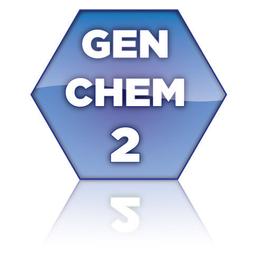Feel free to use or edit a copy
includes Teacher and Student dashboards
Measures 1 skill from
Track each student's skills and progress in your Mastery dashboards
- edit the questions
- save a copy for later
- start a class game
- automatically assign follow-up activities based on students’ scores
- assign as homework
- share a link with colleagues
- print as a bubble sheet
- Q1
Intermolecular forces are the forces:
behind molecules
on top of molecules
within molecules
between molecules
15sSTEM_GC11IMFIIIa-c-103 - Q2
The weaker the intermolecular forces of a substance the _____________ the boiling point
no changes
lower
higher
the same
15sSTEM_GC11IMFIIIa-c-103 - Q3
Which of the following is NOT true about crystalline solids?
Crystalline solids are anisotropic in nature
Cannot be cleaved along a definite plane
They are considered as true solids
Have a sharp melting point
15sSTEM_GC11IMFIIIa-c-103 - Q4
Which type of solid typically has the lowest melting point of the four types of crystals?
Metallic
Molecular
Ionic
Covalent Network
15sSTEM_GC11IMFIIIa-c-103 - Q5
Solids have many different properties. ___________ solids are known for their ability to be flattened into a sheet, stretched into a wire, and to conduct energy well.
Molecular
Metallic
Ionic
Covalent Network
15sSTEM_GC11IMFIIIa-c-103 - Q6
The best example of high viscosity would be?
Marbles
Soap
Water
Honey
15sSTEM_GC11IMFIIIa-c-103 - Q7
Surface tension is the property of water in which...
water molecules at the surface tend to stick together.
water spills easily.
water tends to be see-through.
water tends to hold pressure
15sSTEM_GC11IMFIIIa-c-103 - Q8
Which IMF contains a temporary dipole?
Dipole Dipole
Hydrogen Bonding
Both London Dispersion Forces and Dipole Dipole
London Dispersion Forces
15sSTEM_GC11IMFIIIa-c-103 - Q9
This crystal system has angles that all meet at 90°, but one of the axes is not equal to the other 2: where a=b≠c and α=β=γ= 90°
Orthorhombic
Isometric
Hexagonal
Tetragonal
15sSTEM_GC11IMFIIIa-c-103 - Q10
This crystal system has angles that all meet at 90°, but none of the axes are the same length: a ≠ b ≠ c and α=β=γ= 90°
Orthorhombic
Hexagonal
Isometric
Triclinic
15sSTEM_GC11IMFIIIa-c-103
